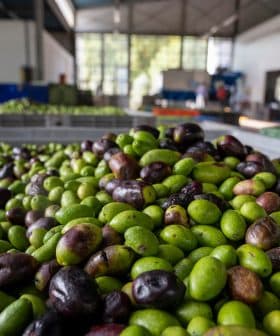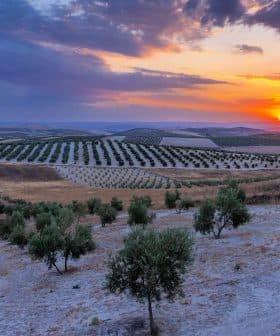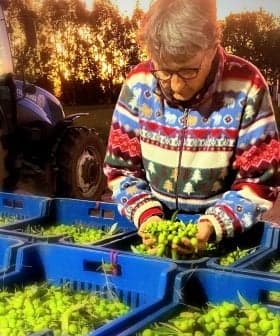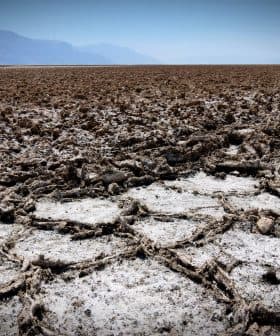The First Zero-Impact Olive Mill to Produce Energy
Giovanni Cassese's designed a system built by Pieralisi that might just be the first completely environmentally sustainable olive mill.
Giovanni Cassese has developed an innovative, environmentally sustainable method of olive oil production that generates power and thermal energy, utilizing the byproducts of the process for cogeneration and anaerobic digestion. This system not only provides electricity for over 50 families but also results in significant savings in transport costs, energy consumption, and wastewater disposal for olive mills, making it a highly efficient and eco-friendly solution.
Harvest just started in Italy and while olive mills are working almost at full capacity we met the creator of an innovative method of production that not only has zero environmental impact but also produces electric and thermal energy.
“This system has reached the highest level of innovation for the disposal of wastewater,” said Giovanni Cassese, who gained experience in the family mill at Villa Castelli, in the province of Brindisi, in Apulia. “A very simple agri-food process became a zero-impact practice to produce high-quality extra virgin olive oil and generate power.”
Cassese conceived adjustments to the mode of operation of a mill and submitted them to the milling technology company Pieralisi, which implemented the new setup in a plant that can be considered the first completely environmentally sustainable olive mill.

“As we know, even the most innovative three-phase system involves a water consumption that ranges from 70 to 110 percent, while the two-phase system generates very reduced water consumption but the waste needs to be further processed to be reusable in some way or digested,” he explained. “After extraction with our mill which employs the DMF (multi-functional decanter) technology, we obtain extra virgin olive oil and two byproducts or, as I call them, ‘differentiated productions’ — the virgin olive pomace with humidity content around 55 percent, that is very well suited to the extraction of olive pit, and the olive pâté.”
See Also:A Centrifugal Force: Gennaro Pieralisi
He pointed out that the real innovation is the use of this product in a plant for anaerobic digestion in the same site of the mill that “allows to exploit all the resultants of a high-efficiency cogeneration.”
The olive pâté is a cream that compared the de-stoned olive pomace has no lignin and a relatively high content of polyphenols. These two qualities make it suitable to be stored for a long period, without causing odor, and it is subsequently digested. The result of digestion, in a plant adapted to work material with relatively high solid substance (EUCOmpact technology), is biogas of 60 percent methane with a considerable average yield of about 150 cubic meters per ton of olive pâté.

“We consume 200,000 kilowatts per year to produce the olive pâté and for all the utilities,” Cassese explained. “Since the result of cogeneration is 765,000 kW, after subtracting the mill consumption and the self-consumption of the plant, we provide to the power grid an amount of electricity to cover the annual needs of more than 50 families.” He clarified that the calculation refers to households consuming over 10,000 kWh/year, but estimating the average consumption of Italian families, he can serve more than 100 families.
Moreover, since the production of energy operates in cogeneration mode, the plant also provides about 800,000kWh of thermal energy in the form of heat that can be used within the mill, to help the processing and to maintain the constant temperature of storage rooms during winter. While in the summer, thanks to the physical principle of trigeneration, the resulting heat is transformed through a lithium bromide absorber into cold water that cools the storage rooms.
The result of digestion is the digestate, that is a formidable fertilizer “ready to return to the same olive trees that gave us their olives and which in their lifetime fixed the CO2 that we re-insert into the atmosphere through the combustion of biogas.”
This new system provides considerable savings. The biogas plant built in the immediate vicinity of the mill allows the resetting of transport costs of the pâté that is preserved without loss of yield and, given the high amount of digestible dry matter, has a decline in weight after digestion of around 20 – 25 percent. Moreover, the spreading can be carried out all year at the farmer’s choice according to the fertilization plan, and it is no longer necessary to dispose of wastewater in the same periods of processing and harvest, resulting in savings of 25 percent for transport costs.
The use of olive pâté from the DMF technology generates immediate savings in the management expenditures of the mill, with zero consumption of drinking water that would be used to dilute the olive paste in the decanter, the reduction of energy consumption and the total absence of wastewater resulting from oil extraction.
According to Cassese, “this is at the moment the best extraction system with regard to water and energy conservation, and environmental protection.”









